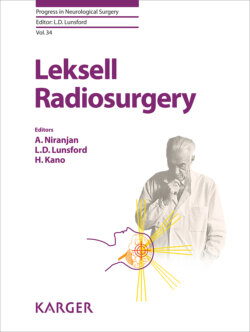Читать книгу Leksell Radiosurgery - Группа авторов - Страница 61
На сайте Литреса книга снята с продажи.
MR Diffusion and Diffusion Tensor Imaging
ОглавлениеDiffusion MRI measures the mobility of water within tissues at the cellular level and therefore can detect microenvironment changes in tumor tissue. Changes in diffusion can occur due to cell swelling, necrotic/apoptotic cell death after therapy, or extracellular water space changes because of edema [9]. Changes in tumor such as cell death following radiosurgery lead to transient increases in regional diffusion, which may be an important early indicator of treatment response. The extent of directional diffusion can be estimated with an apparent diffusion coefficient (ADC). Because diffusion is analyzed using average ADC values in the entire tumor, it can significantly underestimate regional changes following SRS. The parametric response map (PRM ADC) is a voxel-wise approach for evaluating ADC changes and has been found to be an independent, early predictor of overall survival. Because ADC maps are independent of the MRI system, vendor, and field strength, it can be used as an accurate and noninvasive method of performing longitudinal studies. Diffusion tensor imaging (DTI) is a diffusion technique that allows visualization of white matter tracts. Previous studies have suggested that change in the diffusion index of normal-appearing brain white is an indicator for delayed radiation-induced neurotoxicity [10]. These studies examined changes in diffusion indices including fractional anisotropy as an index of fiber integrity, mean diffusivity as an index of overall diffusivity, radial diffusivity as an index of demyelination, and axial diffusivity as an index of fiber degradation. Surgical series have demonstrated the utility of DTI in reducing the risk of morbidity of brain tumor resections near critical structures. Similar incorporation of DTI tractography imaging in SRS may be valuable with regards to the delineation of normal tissue avoidance structures in treatment planning for lesions near eloquent regions. The use of diffusion tensor tractography has been documented by Koga et al. [11] and indicated a significant reduction in motor complications in AVM cases that are planned based on this additional modality. Incorporation of tractography data in SRS treatment planning has been shown in studies to lead to a decreased dose to critical structures, including the optic tract and pyramidal tracts [12]. High-definition fiber tracking (HDFT) is a novel combination of processing, reconstruction, and tractography methods using diffusion data that can track fibers from the cortex, through complex fiber crossings, to cortical and subcortical targets with at least millimeter resolution. We have incorporated HDFT images in the GammaPlan system to visualize fiber tracts to confirm the location of the ventralis intermedius nucleus of thalamus for patients with tremor (Fig. 5).
Fig. 5. HDFT images showing the cerebellothalamocortical tract (CTC), sensory tract (ST), and pyramidal tract (PT). CTC consists of the dentate projections that cross the midline in the decussation of the superior cerebellar peduncle, which then pass around the red nucleus and enter the VIM of the thalamus. The CTC then projects from the VIM to the primary motor cortex (area 4). The area where the CTC intersects the thalamus is the location of the VIM nucleus. These tracts can be used to confirm the location of VIM for radiosurgical thalamotomy.
